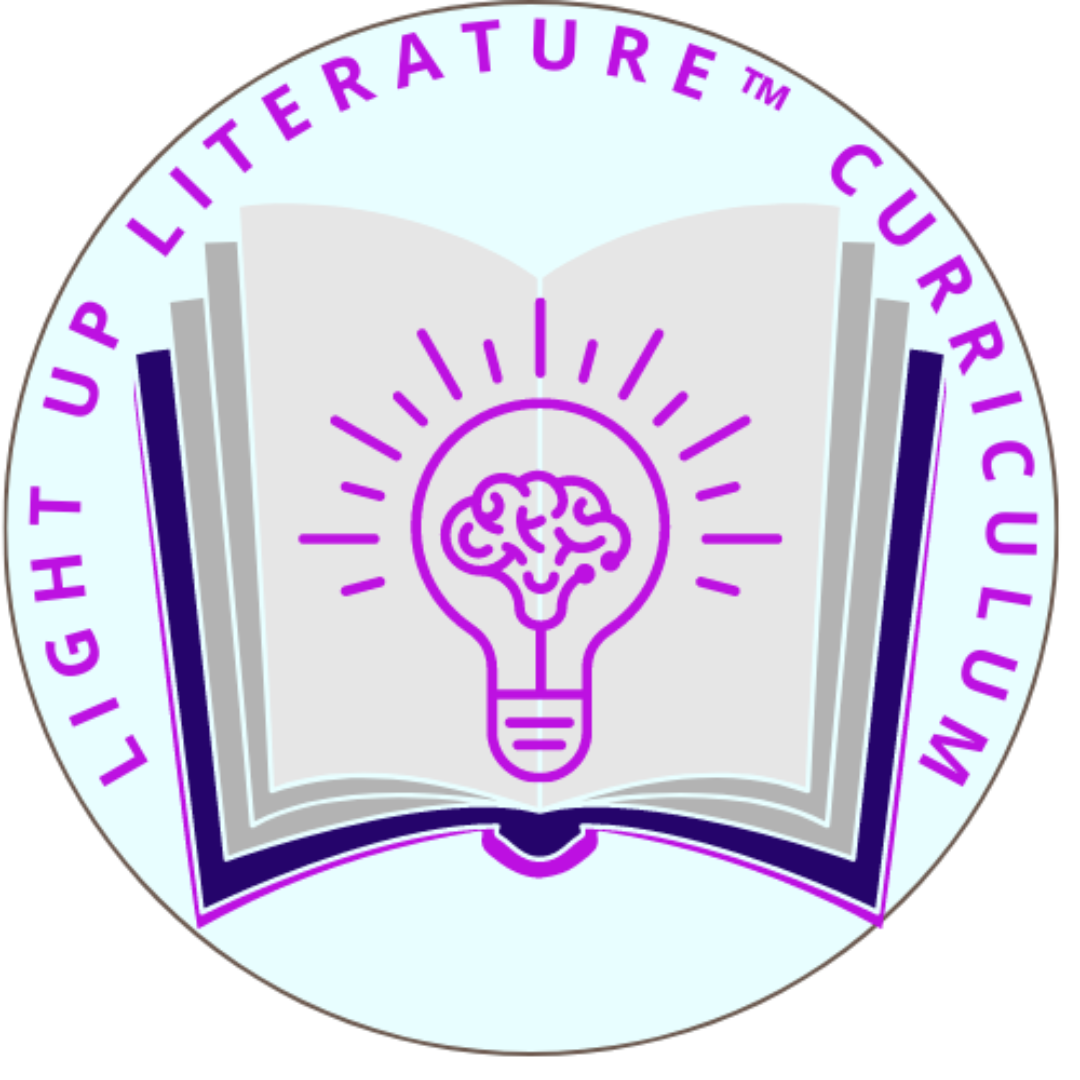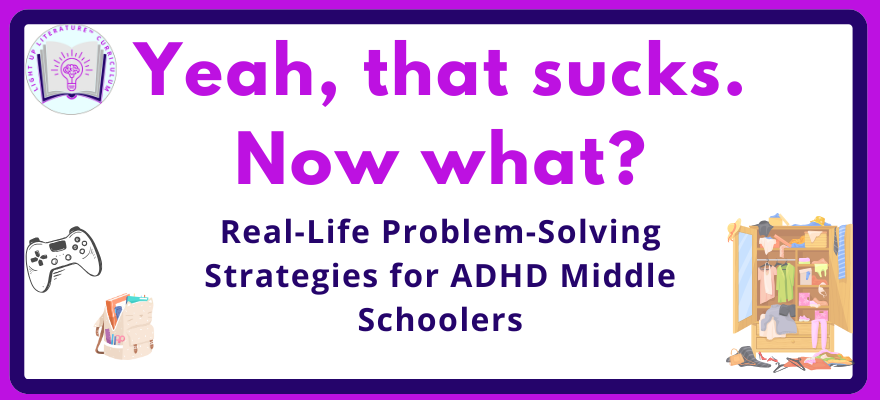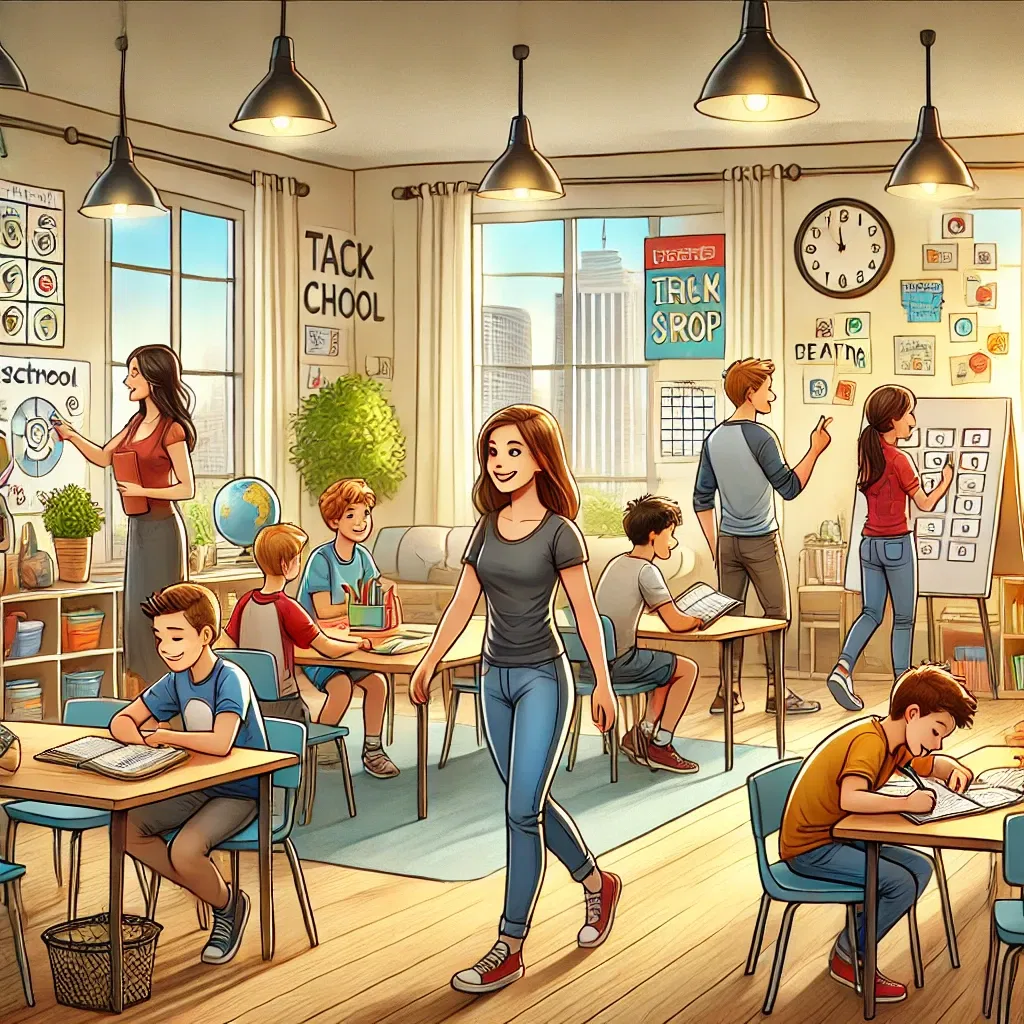7 Real ADHD Teaching Strategies That Actually Work

7 Real ADHD Teaching Strategies That Actually Work
7 Real ADHD Teaching Strategies That Actually Work
From a Mom, Teacher, and ELA Pro
By Debra Shepherd | Light Up Literature™
Real Talk: What Happened When No One Showed Up
I recently gave a full 30-minute presentation on ADHD teaching strategies at Riverside Christian Academy.
No one came.
Except Emily—the founder of Homeschool Show & Share. She stayed, listened to the entire talk, asked a question, and took a full page of notes.
That’s when it hit me: sometimes your audience is small, but your message still matters. I didn’t cancel. I showed up. And I shared everything I’ve learned as an ADHD mom, middle school teacher, and curriculum creator.
Whether you’re homeschooling, supporting a neurodivergent kid at home, or teaching in a traditional setting—here are 7 realistic, research-backed strategies that actually work.
1. The Power of Choice (Within Boundaries)
ADHD kids crave control—but too many choices lead to shutdown. The solution? Give them choices you already approve of.
Why it works:
Offering structured choices increases motivation and reduces oppositional behavior.
📊 Stat: Students with ADHD show 14–25% greater task persistence when given meaningful choices.
Try this:
“You need to complete math, reading, and writing today. What do you want to start with?”
“Would you rather do your reading inside or outside?”
Keep in mind:
Never offer an option you’re not okay with.
This gives the illusion of control while preserving structure.
Summary bullets:
✅ Empower without overwhelming
✅ Build trust through autonomy
✅ Increases compliance and self-initiation
2. Change the Environment to Reset the Brain
Sometimes, it’s not about what they’re doing—it’s where they’re doing it. ADHD brains often respond better after a scene change.
📊 Stat: A 20-minute walk in nature improves attention in ADHD children comparably to a dose of Ritalin (University of Illinois study).
Environment hacks:
🟣 Work on the back porch or front steps
🟣 Do flashcards at the park with a snack
🟣 Let PE happen in the pool or trampoline
🟣 Use natural light instead of overhead bulbs
Benefits:
Natural sunlight boosts dopamine levels
Movement and sensory input calm overstimulation
A “new setting” breaks negative momentum
Summary bullets:
✅ Outdoor learning enhances focus
✅ Movement relieves frustration
✅ Reframes the day without confrontation
3. Interest-Based Learning Is a Game-Changer
You didn’t choose homeschool to recreate public school at your kitchen table. Use your freedom to teach through what your child actually cares about.
📊 Stat: Interest-based instruction increases retention and engagement by up to 31% in ADHD students (Journal of Attention Disorders).
Examples:
A kid who loves cars? Study force, motion, and descriptive writing about vehicles.
Obsessed with Harry Potter? Integrate Latin roots, essay writing, and SEL topics like “belonging” and “loyalty.”
Can’t stop talking about Minecraft? Practice persuasive writing (“Why We Should Build a Farm First”), math in Redstone logic, and creative fiction.
Summary bullets:
✅ Keeps attention without bribes or threats
✅ Encourages curiosity and exploration
✅ Builds positive learning associations
4. Use Positive Competition to Motivate (Without Shame)
ADHD brains thrive on novelty and immediate reward. Competition—when it’s fun, fair, and low-stakes—triggers the dopamine boost they crave.
📊 Stat: Gamified learning increases on-task behavior in ADHD students by up to 30% (Frontiers in Psychology, 2020).
Ideas:
🟣 Vocabulary “jams” or flashcard races
🟣 Track weekly quiz score improvements
🟣 Celebrate effort with micro-rewards (stickers, Skittles, or silly awards)
What worked for me:
I used to let my students compete across classrooms. When my class lost? Both rooms still erupted in cheers. The energy was unforgettable—and the learning stuck.
Summary bullets:
✅ Builds excitement for repetitive tasks
✅ Helps socially anxious kids bond in small teams
✅ Encourages effort over perfection
5. Cross-Curricular Integration = Less Overwhelm, More Meaning
Instead of planning 7 different subjects, create anchor lessons that connect across areas.
📊 Stat: Cross-curricular instruction helps ADHD students retain 40% more content when built around an interest or theme (NCLD).
Example using The Hobbit:
Reading: Analyze Bilbo’s character arc
History: WWI parallels and British literature context
Writing: Personal narrative on courage
Science: Study ecosystems like Mirkwood
SEL: Explore themes of fear, bravery, and identity
Benefits:
Fewer transitions = less dysregulation
Deeper connections = better retention
Less prep for you = more sanity saved
Summary bullets:
✅ Reduces cognitive overload
✅ Makes school feel like a story, not a chore
✅ Encourages theme-based thinking
6. Focus on Outcome, Not the Eye-Roll
Let’s be real: middle schoolers are going to roll their eyes, stomp, or mutter under their breath. Let them.
🟣 You’re not raising a robot. You’re raising a human who’s still learning how to regulate.
📊 Stat: Studies show that focusing on clear expectations and task completion—not attitude—improves cooperation in ADHD households (CHADD, 2021).
Set your “non-negotiables” (3–5 max). Ours were:
Be respectful
Make good grades
Do what you’re told — even if you groan
My motto?
“Roll ’em twice, baby—just go get it done.”
Summary bullets:
✅ Teaches emotional regulation by example
✅ Avoids unnecessary power struggles
✅ Reinforces long-term habits over short-term moods
7. Make Room for Emotions, Then Teach Through Them
ADHD isn’t just about focus. It’s about intense emotions—fast shifts, high peaks, deep crashes.
📊 Stat: ADHD kids show delayed emotional regulation brain development, especially in the amygdala and prefrontal cortex (National Institute of Mental Health).
Here’s what helps:
🟣 Give a “5-minute meltdown timer” to feel big feelings
🟣 Normalize saying “This sucks!” while still finishing
🟣 Let them write, draw, walk, or scream (safely)
🟣 Stay calm yourself—even if they’re not
For blended families or kids with trauma, regulation will take time. Give grace, but don’t skip structure.
Summary bullets:
✅ Validates real emotional experiences
✅ Builds long-term self-awareness
✅ Creates safety even during stress
Final Word: You’re Doing Better Than You Think
If you made it this far, you’re clearly trying. That already makes you a different kind of educator—one your child will remember for life.
This isn’t about perfect lessons or perfectly behaved kids. It’s about real growth, connection, and resilience. ADHD learners need people who don’t give up on them, even when they melt down over math or forget where their pencil went.
And you? You’re still here.





